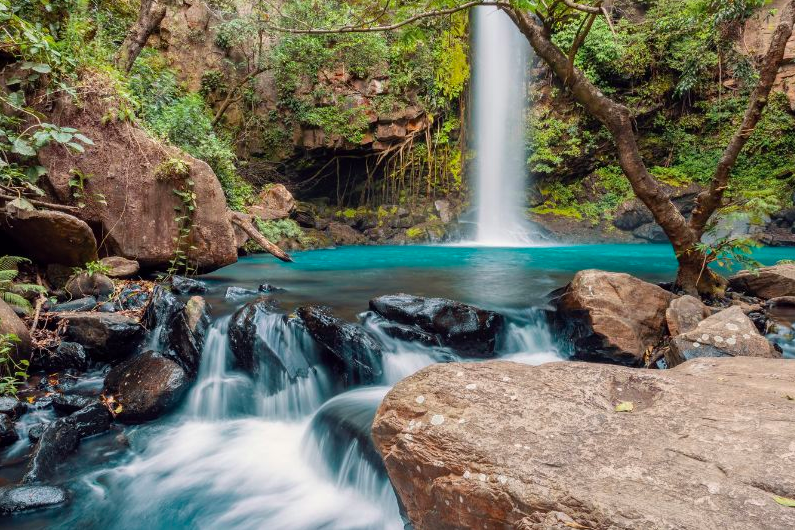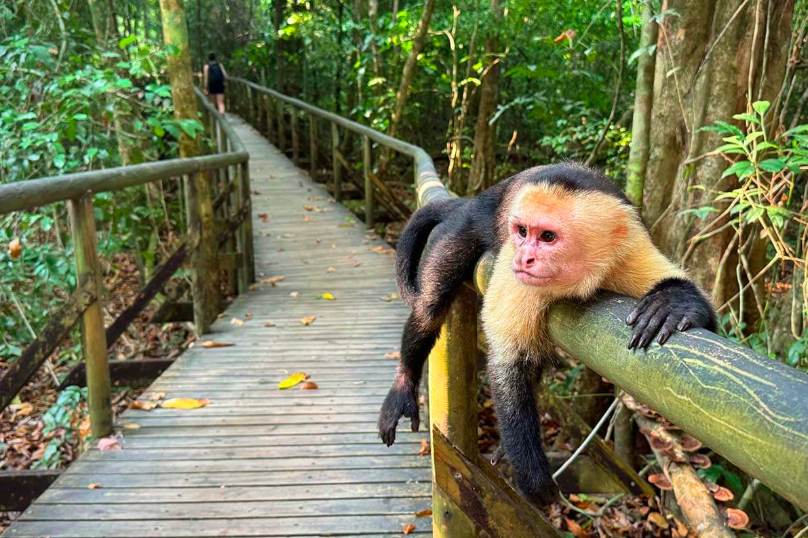Costa Rica stands as one of the world’s premier eco-tourism destinations, offering an incredible blend of biodiversity, adventure, and cultural richness within a relatively compact area. This Central American gem contains nearly 6% of the world’s biodiversity despite covering only 0.03% of Earth’s surface, making it an unparalleled destination for nature enthusiasts and adventure seekers alike.
For first-time visitors, Costa Rica presents the perfect opportunity to experience sustainable tourism at its finest. The country’s commitment to conservation is evident in its extensive national park system, which protects over 25% of its territory. From misty cloud forests to pristine beaches, active volcanoes to vibrant coral reefs, Costa Rica offers diverse ecosystems that support an astounding array of wildlife.
The beauty of Costa Rica lies not only in its natural wonders but also in its accessibility for travelers of all experience levels. Whether you’re seeking adrenaline-pumping adventures like canopy tours and white-water rafting, or prefer peaceful wildlife observation and cultural immersion, this country delivers authentic experiences while maintaining its commitment to environmental protection.
This comprehensive guide highlights the ten essential destinations that should top every first-time visitor’s Costa Rica itinerary. Each location offers unique opportunities to explore responsibly, support local communities, and create lasting memories while contributing to conservation efforts.
Arenal Volcano Area: Adventure Meets Natural Wonder
The Arenal region serves as Costa Rica’s adventure capital, dominated by the impressive Arenal Volcano, which remained active for over 40 years before entering a resting phase in 2010. This area perfectly exemplifies Costa Rica adventure tourism, offering an incredible variety of activities set against the backdrop of one of the country’s most iconic landmarks.
Arenal Volcano National Park protects the volcano and surrounding rainforest, providing habitat for over 850 bird species and countless mammals, reptiles, and amphibians. The park’s well-maintained trail system allows visitors to explore diverse ecosystems while learning about volcanic geology and forest ecology from knowledgeable local guides.
The region’s natural hot springs, heated by geothermal activity, offer the perfect way to unwind after days filled with adventure. Tabacón Thermal Resort and Baldi Hot Springs provide luxury relaxation experiences, while more budget-friendly options like Eco Termales offer intimate settings surrounded by pristine rainforest.
Adventure activities abound in the Arenal area. Canopy tours allow visitors to glide through the forest canopy on ziplines, providing unique perspectives of the ecosystem while supporting sustainable tourism initiatives. Hanging bridge walks offer gentler wildlife viewing opportunities, while horseback riding tours connect visitors with local ranching traditions.
For the ultimate Costa Rica adventure experience, consider combining volcano hiking with night tours to spot nocturnal wildlife, followed by relaxation in natural hot springs under star-filled skies.
Monteverde Cloud Forest: A Mystical Ecosystem
Monteverde Cloud Forest Reserve represents one of Costa Rica’s most unique ecosystems, where perpetual mist creates an otherworldly environment supporting extraordinary biodiversity. This high-altitude forest, established through community conservation efforts, demonstrates how sustainable tourism can protect fragile ecosystems while providing economic opportunities for local communities.
The cloud forest’s constant moisture supports an incredible array of epiphytes, including over 500 orchid species and countless bromeliads that create vertical gardens on tree trunks. This unique environment supports over 400 bird species, including the resplendent quetzal, considered one of the world’s most beautiful birds.
Monteverde’s canopy tour pioneered sustainable adventure tourism in Costa Rica. The original Sky Trek canopy tour, designed by local conservationists, allows visitors to experience the forest from multiple perspectives while minimizing environmental impact. Hanging bridges provide additional opportunities for wildlife observation and photography.
The Monteverde community exemplifies sustainable development principles. Local Quaker settlers, who arrived in the 1950s, established conservation practices that continue today. Visitors can tour organic coffee farms, learn about sustainable agriculture, and participate in reforestation projects that directly contribute to ecosystem restoration.
Night tours in Monteverde reveal the forest’s hidden life. With experienced local guides, visitors can spot nocturnal species including various owl species, colorful frogs, and fascinating insects that remain hidden during daylight hours.
Manuel Antonio National Park: Where Rainforest Meets Ocean
Manuel Antonio National Park combines pristine beaches with lush rainforest, creating one of Costa Rica’s most popular and accessible destinations. Despite being the country’s smallest national park, Manuel Antonio protects crucial habitat for endangered species while offering visitors incredible wildlife viewing opportunities just steps from beautiful Pacific beaches.
The park’s trail system winds through primary and secondary forest before emerging onto pristine beaches where visitors can observe wildlife and enjoy Costa Rica’s famous hospitality. Sloths, monkeys, and countless bird species inhabit the forest, while the beaches provide nesting sites for sea turtles and feeding areas for various shorebirds.
Manuel Antonio’s beaches offer perfect opportunities for relaxation and water activities. Playa Manuel Antonio and Playa Espadilla Sur provide calm waters ideal for swimming and snorkeling, while the surrounding forest creates natural shade and spectacular scenery.
Wildlife viewing in Manuel Antonio requires patience and respect for animal habitats. Local guides, trained in wildlife ethics and conservation principles, help visitors spot animals while maintaining appropriate distances and minimizing disturbance. The park’s population of endangered squirrel monkeys represents a conservation success story, with numbers recovering through protection efforts and habitat restoration.
The nearby town of Manuel Antonio offers eco-friendly accommodations ranging from luxury resorts to budget-friendly lodges, many participating in certification programs that ensure genuine environmental commitment and support for local communities.
Tamarindo: Surfing and Beach Culture
Tamarindo represents Costa Rica’s vibrant beach culture, combining world-class surfing with laid-back Pacific coast atmosphere. This bustling beach town serves as an excellent base for exploring the Guanacaste province while offering diverse activities for visitors of all interests and skill levels.
The town’s main beach provides ideal conditions for beginning surfers, with consistent waves and sandy bottoms that ensure safer learning experiences. Numerous local surf schools, many operated by certified instructors from the community, offer lessons and equipment rentals while emphasizing ocean safety and environmental awareness.
Beyond surfing, Tamarindo offers excellent opportunities for wildlife observation. Nearby Las Baulas National Marine Park protects crucial nesting beaches for endangered leatherback sea turtles. Guided night tours during nesting season (October through March) provide unforgettable experiences while supporting conservation research and community-based tourism initiatives.
The Tamarindo Estuary, accessible by kayak or boat tours, supports diverse wildlife including crocodiles, various bird species, and countless fish. These tours, led by local guides with intimate knowledge of the ecosystem, provide education about mangrove ecology and coastal conservation while generating income for community members.
Tamarindo’s restaurant scene showcases Costa Rica’s evolving culinary culture, with establishments emphasizing locally sourced ingredients and traditional cooking methods alongside international cuisine. Many restaurants participate in sustainable practices, supporting local farmers and reducing environmental impact.
Puerto Viejo: Afro-Caribbean Culture and Natural Beauty
Puerto Viejo de Talamanca offers visitors authentic Afro-Caribbean culture combined with spectacular natural beauty along Costa Rica’s Caribbean coast. This laid-back town provides opportunities to experience a different side of Costa Rican culture while enjoying pristine beaches and diverse ecosystems.
The area’s cultural richness reflects the heritage of Jamaican and other Caribbean immigrants who settled here in the early 20th century. Local music, featuring calypso and reggae influences, fills the air, while traditional Caribbean cuisine offers flavors distinct from other Costa Rican regions. Rice and beans cooked in coconut milk, fresh seafood, and tropical fruits create memorable culinary experiences.
Puerto Viejo’s beaches offer diverse experiences for different preferences. Playa Cocles provides excellent surfing conditions for intermediate and advanced surfers, while Punta Uva offers calmer waters perfect for swimming and snorkeling. The coral reefs offshore support diverse marine life, making this area ideal for underwater exploration with local dive operators committed to reef conservation.
Cahuita National Park, easily accessible from Puerto Viejo, protects one of Costa Rica’s most important coral reef systems. The park’s coastal trail allows visitors to observe both terrestrial and marine wildlife while learning about coastal ecosystem conservation from knowledgeable local guides.
The nearby Gandoca-Manzanillo Wildlife Refuge extends protection to additional coastal and inland habitats, including important nesting beaches for sea turtles and critical habitat for manatees and dolphins. Community-based tourism initiatives in the refuge provide economic alternatives to fishing while supporting conservation efforts.
Tortuguero National Park: Venice of Costa Rica
Tortuguero National Park offers one of Costa Rica’s most unique experiences, accessible only by boat or small aircraft. This remote destination, often called the “Venice of Costa Rica” due to its network of canals, provides unparalleled opportunities for wildlife observation while supporting crucial conservation efforts.
The park protects over 300 square kilometers of rainforest, wetlands, and beaches that serve as nesting sites for four sea turtle species, including endangered green sea turtles. Tortuguero’s turtle nesting programs represent some of the world’s longest-running sea turtle research, with visitors able to participate in guided night tours that contribute directly to conservation efforts.
Canal tours through Tortuguero’s waterways reveal incredible biodiversity. Local guides, many trained through community-based programs, possess intimate knowledge of wildlife behavior and habitat requirements. Visitors can observe three-toed sloths, various monkey species, colorful birds including toucans and parrots, and if fortunate, manatees and caimans.
The village of Tortuguero demonstrates sustainable tourism principles in action. Local families operate small lodges and restaurants, while many community members work as guides, boat operators, and in turtle conservation programs. This economic model ensures that tourism benefits directly support local livelihoods and conservation efforts.
Tortuguero’s remote location requires careful planning but rewards visitors with authentic rainforest experiences impossible to find in more accessible destinations. The absence of roads and vehicles creates peaceful environments where natural sounds dominate and wildlife viewing opportunities abound.
La Fortuna Waterfall: Natural Swimming Paradise
La Fortuna Waterfall showcases Costa Rica’s incredible natural beauty through a spectacular 70-meter cascade surrounded by lush rainforest. This iconic destination offers visitors the opportunity to experience Costa Rica’s pristine natural environments while supporting local conservation and community development initiatives.
The waterfall, formed by the Rio Fortuna as it plunges over ancient lava flows, creates a natural swimming pool surrounded by towering trees and exotic plants. The hike to reach the waterfall base involves descending approximately 500 steps through well-maintained trails that showcase the area’s diverse plant life and provide opportunities for wildlife observation.
Swimming in the waterfall’s pool provides refreshing relief from Costa Rica’s tropical climate while offering unique perspectives of the surrounding rainforest. The crystal-clear water, fed by mountain springs, maintains comfortable temperatures year-round and supports small fish populations that create natural aquarium-like conditions.
The surrounding rainforest supports diverse wildlife populations that visitors can observe with patience and respect for animal habitats. Howler monkeys, various bird species, and colorful butterflies inhabit the forest, while the waterfall’s mist creates microclimates that support unique plant communities.
Local conservation groups work to protect the waterfall and surrounding forest through sustainable tourism practices and environmental education programs. Entrance fees contribute directly to trail maintenance, habitat protection, and community development projects that ensure long-term conservation of this natural treasure.
Poás Volcano National Park: Active Geology and Coffee Culture
Poás Volcano National Park offers visitors the rare opportunity to peer into an active volcanic crater while exploring high-altitude ecosystems and world-renowned coffee plantations. This accessible national park demonstrates Costa Rica’s geological diversity while showcasing sustainable agriculture practices and conservation efforts.
The volcano’s main crater, over one kilometer in diameter, contains an acidic lake that changes color depending on volcanic activity and weather conditions. Well-constructed viewing platforms allow safe observation of this geological wonder while interpretive displays explain volcanic processes and the area’s unique ecosystem adaptations.
The park’s high-altitude location creates unique environmental conditions that support specialized plant and animal communities. Cloud forests at higher elevations harbor different species than lowland rainforests, including endemic plants found nowhere else on Earth. The park’s trail system allows exploration of these diverse habitats while minimizing environmental impact.
Coffee plantations surrounding the national park benefit from rich volcanic soils and ideal climate conditions that produce some of the world’s finest coffee. Many farms offer tours that explain sustainable coffee production methods, from cultivation through processing, while providing opportunities to support local farmers through direct purchases.
The region’s commitment to sustainable agriculture extends beyond coffee production to include organic farming initiatives and forest conservation programs that protect watershed areas and wildlife corridors. These efforts demonstrate how agricultural communities can thrive while maintaining environmental stewardship.
Corcovado National Park: The Crown Jewel of Biodiversity
Corcovado National Park represents Costa Rica’s wildest and most biodiverse destination, protecting one of Central America’s largest remaining lowland tropical rainforests. This remote national park offers serious nature enthusiasts unparalleled opportunities for wildlife observation and wilderness experiences while supporting crucial conservation efforts.
National Geographic has called Corcovado “the most biologically intense place on Earth,” with the park protecting habitat for endangered species including jaguars, tapirs, scarlet macaws, and all four Costa Rican monkey species. The park’s pristine condition results from its remote location and strict protection measures that limit visitor numbers and require guided access.
Multi-day hiking expeditions into Corcovado’s interior provide authentic wilderness experiences unavailable elsewhere in Costa Rica. Well-trained local guides, essential for safe navigation and wildlife observation, possess intimate knowledge of the forest and its inhabitants developed through generations of living in harmony with these ecosystems.
The park’s coastal sections combine pristine beaches with inland rainforest, creating diverse habitats that support both terrestrial and marine species. Sea turtle nesting, dolphin and whale observation, and coastal bird watching complement inland wildlife viewing opportunities.
Access to Corcovado requires careful planning and physical preparation, but rewards visitors with experiences that contribute directly to conservation efforts and local community development. Park entrance fees and guide requirements ensure that tourism supports both ecosystem protection and indigenous and local communities whose traditional knowledge proves invaluable for conservation success.
San José: Cultural Heart and Gateway
San José, Costa Rica’s capital and largest city, serves as the cultural heart of the country and the gateway for most international visitors. While many travelers rush through San José to reach natural destinations, the city offers important cultural experiences and serves as an excellent base for understanding Costa Rican history, arts, and contemporary society.
The city’s museums provide comprehensive introductions to Costa Rican culture and natural history. The Gold Museum showcases pre-Columbian artifacts that demonstrate sophisticated indigenous cultures, while the National Theater represents the country’s commitment to arts and culture. The Museum of Natural Sciences offers excellent preparation for wildlife observation throughout the country.
San José’s markets and neighborhoods reveal authentic Costa Rican daily life often missed by visitors who focus exclusively on tourism destinations. The Central Market provides opportunities to sample local foods, purchase handicrafts made by local artisans, and experience the vibrant atmosphere of Costa Rican commerce.
The city’s restaurant scene showcases both traditional Costa Rican cuisine and contemporary interpretations that reflect the country’s cultural diversity. Many establishments emphasize locally sourced ingredients and traditional preparation methods while supporting sustainable agriculture and local producers.
San José’s strategic location makes it an ideal base for day trips to nearby attractions including coffee plantations, butterfly gardens, and cloud forests. These easily accessible destinations provide excellent introductions to Costa Rica’s natural wonders while supporting local communities through sustainable tourism practices.
Planning Your Costa Rica Adventure
Costa Rica offers first-time visitors an incredible array of experiences that showcase the country’s commitment to sustainable tourism and environmental conservation. These ten destinations provide diverse opportunities to explore responsibly, support local communities, and create lasting memories while contributing to conservation efforts that protect some of the world’s most important ecosystems.
When planning your Costa Rica adventure, consider the country’s two distinct seasons: the dry season (December through April) offers sunny weather and easier travel conditions, while the green season (May through November) provides lush landscapes, fewer crowds, and lower prices, though afternoon rains are common.
Choose accommodations that participate in certification programs ensuring genuine environmental commitment and support for local communities. Many lodges and hotels throughout Costa Rica have achieved sustainability certifications that verify their conservation practices and community engagement.
Support local guides and tour operators who possess intimate knowledge of ecosystems and wildlife behavior while contributing directly to community economies. These professionals provide invaluable insights into Costa Rica’s natural wonders while ensuring safe and respectful wildlife observations.
Pack appropriately for diverse climates and activities, including lightweight rain gear, comfortable hiking shoes, and sun protection. Biodegradable sunscreen and insect repellent help protect both your health and the environment.
Most importantly, embrace Costa Rica’s “Pura Vida” philosophy, which emphasizes appreciation for life’s simple pleasures and harmony with nature. This approach to travel ensures that your visit contributes positively to conservation efforts while providing authentic experiences that showcase the best of Costa Rican culture and natural beauty.
Your Costa Rica adventure awaits, promising unforgettable encounters with incredible wildlife, breathtaking landscapes, and warm, welcoming communities committed to protecting their natural heritage for future generations.



